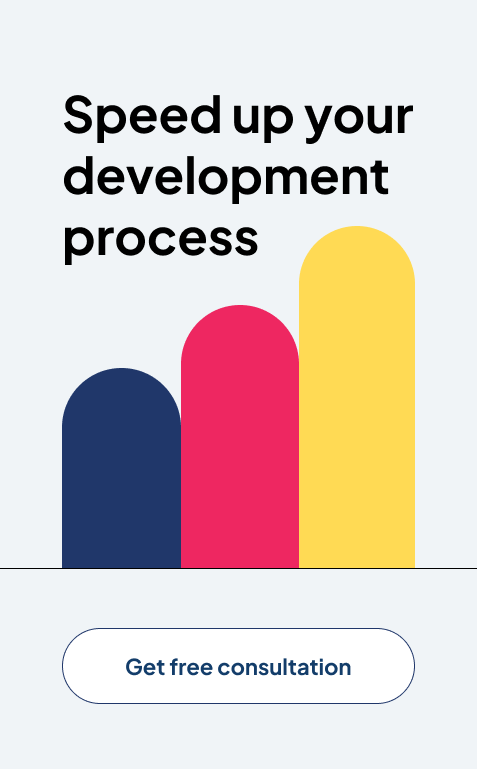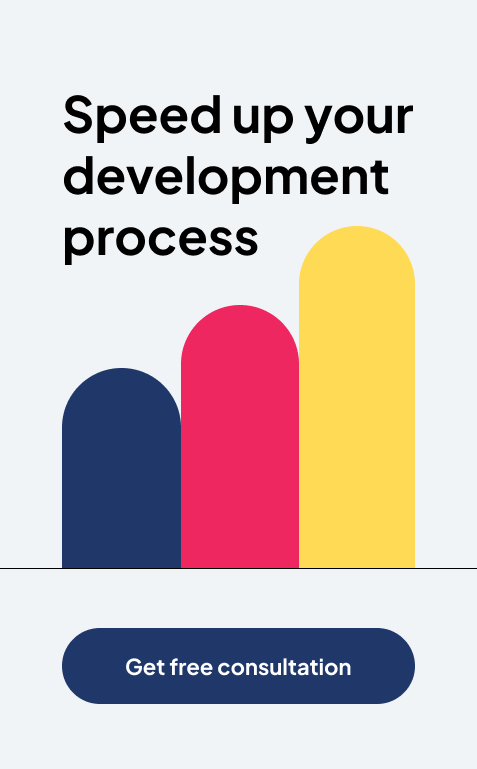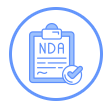NFT Game Development Guide: All You Need to Know
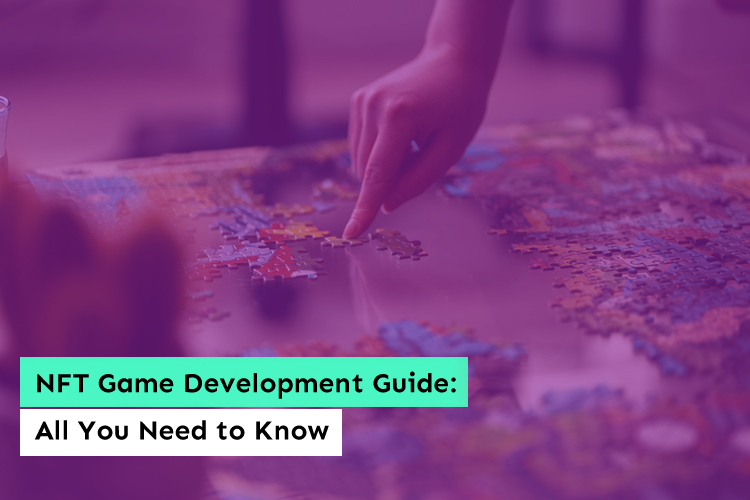
The history of online games goes back to the first computer game, NIMROD, to multiplayer role-playing games like Dungeons and Dragons. The madness for video games hasn’t ever faded; instead, it keeps expanding.
Whether in the 1990s, playing Mario on a PC, hopping around the plumbing maze to save princess Peach, or running through an Aztec temple, collecting coins, and chasing idols in 2019, video games have always been about community and involvement.
A weekend video game marathon with friends to satisfy the urge for adventure and heroism with shooter games is always fun. It’s so worth the time and attention!
Now in 2022, technology has matured so much in the world; we are now at blockchain, cryptocurrencies, NFTs, ledger, and all the terms that a few people understand. Nevertheless, the NFTs have given birth to a new domain of play-to-earn games, with people spending nights in front of their screens.
And although there are many speculations about whether the blockchain, NFT, and crypto space will succeed or not, it is true that there is a lot of money being invested into it.
So if you are someone who wants to make money playing games or an entrepreneur looking to break into the gaming industry, developing an NFT game is the apple to grab at the moment.
So let’s start with what an NFT is. Having a clear foundation will make the game development journey easier for you.
What are NFTs?
NFT stands for Non-Fungible Tokens.
Let’s break it down word by word.
Fungible is a term used by economists to describe interchangeable properties or commodities because they have the same value.
Taking the simplest example of cash. If you have $50, you can exchange them for ten $5 bills and still have the same amount. The value of one $50 bill and ten $5 bills is the same; that is why they are exchangeable.
So a non-fungible entity will be non-exchangeable or non-replaceable. Non-fungible tokens are basically non-replaceable tokens.
You must be wondering how does a commodity become non-replaceable?
The key to understanding this is through a collector’s perspective. Suppose there is an orange coffee mug that Lebron James uses while he works out for the NBA. Now there can be millions of orange coffee mugs in the world, but because this orange mug has been the workout pal of Lebron James, it is unique. There can be no other mug like this one in the entire world. And that is why it has a unique value.
The emotional attachment to a property is how we distinguish things in the world.
Another thing to keep in mind is the property doesn’t always have to be physical. NFTs are digital commodities created, minted, sold, and bought on the blockchain.
All the transactions of NFTs are stored and tracked on blockchain networks using cryptocurrencies.
Two more hokum words – blockchain and cryptocurrencies.
Let’s see what blockchain is.
What is blockchain?
Money, as we know it today, has value because a government authority assigns that value to all of society. We have established institutions like banks and investment firms that manage the money.
The daily job of these institutions is to keep track of all the transactions, how much money someone has in their account, and transfers from one account to another.
So when it comes to money, there are two important aspects – the combined acceptance of a fixed value of money and an authority figure to track the amount in everyone’s bank account.
Blockchain does both but without a third-party entity.
It is an online bank owned by people’s computers that track the transactions. For every online payment you make, the bank calculates how much money to deduct from your bank account and how much to add to the receiver’s account. Without cash, payments are just long spreadsheets that, in the end, tell you how much money one has in their bank account.
But banks are private organizations; on the flip side, blockchain runs on various computers where everyone who has access to the blockchain has access to the public record of all the transactions. Every transaction is recorded in a block with a unique hash code, the sender’s name, how much money is being transferred to whom, and the balance left.
Each block is connected with the previous and next blocks and has the matching data. All such transactions are being recorded in the public system, i.e., every transaction has thousands of copies.
Investors are crazy about blockchain because it is secure and can’t be tampered with. If a hacker changes the data of one block, all the connecting blocks will automatically render wrong, and the system will know that something is fishy.
So here is a one-liner for what’s blockchain –
No banks, online wallets, third-party apps, just a virtual ledger run by the community.
There are many popular blockchains used for game development. We will discuss them later.
What are Cryptocurrencies?
They are digital currencies not regulated by any central authority. Cryptocurrencies are verified and recorded by a decentralized system using digital ledgers like blockchain.
To technical?
Simply put, cryptocurrencies are digital currencies that are traded on the blockchain.
In NFT game development, cryptocurrencies are used for trading, cashing out, flip, and buying NFTs. Users have smart wallets and contracts that record their NFT transactions on the blockchain.
Why the NFT games have people gone crazy?
Nearly half of the world’s population plays online games!
A video games & esports statistics report states that 3.24 billion people play online games. So the world already devours games, but NFT games offer something more – ownership.
NFT games opened new gaming and earning opportunities with p2e games where players can own a unique asset. And unlike other popular games like Fortnite, where the rare items are limited and if players miss out on them, they have to wait for the next update.
In NFT games, players can own everything – the accessories, land, loot, in-game currency, and more.
Also, many games are collectors too, and with NFTs, they can not only collect digital assets, but they can also collect something unique, a piece of the digital world that only belongs to them. Players can also flip theirs owns to earn cryptocurrencies or collect more unique assets.
NFT p2e games attract perennial gamers, collectors, and flippers. Moreover, the p2e in-game asset ownership drives the rapid success of blockchain-based NFT games.
As per a Statista report of January 2022, many players are interested in the NFT gaming universe.
According to a Global Newswire report, the p2e NFT game market has been exploding, and it is expected to be worth USD 2845.1 million by 2022-2028.
Popular NFT games out there
Axie Infinity

One of the most popular games in the NFT universe is Axie infinity. It is a play-to-earn (p2e) NFT game where players can engage in battle, win and breed Axies, the game’s main character.
Axie Infinity has more than 8 million registered users and 2.8 million active players daily.
Players can customize their Axies from different types and earn the in-game rewarding currency or NFT called smooth love potion (SLP) after beating other players in battle and claiming victories. Once users have SLP, they can spend it to breed Axies to create newer versions of them. And then flip them for more SLP.
Finally, they can use this SLP to buy Ethereum or other cryptocurrencies.
Players can also buy these axies on third-party platforms like OpenSea, where people buy, sell and trade NFTs.
Raid party

It is an online multiplayer game that has been gaining much traction. Raid party is an Ethereum-based game where the sole purpose is to earn a play to earn mechanics. As the game developers intended, players join the raid, which is a massive dungeon where a single boss is present at all times.
Players have parties with whom they enter into the dungeon, and that is going to consist of one hero NFT and a limited number of fighter NFTs. in short, they fight against the baddie, and as victory emerges on the horizon,,, they earn CFTI.
CFTI is the utility token of the Raid Party ecosystem. Players can use it to mint new NFTs, enhance the existing ones, and more.
And they can also keep that CFTI token to trade for Ethereum and earn value that way.
Alien worlds

It is a fantastic p2e sci-fi adventure game for players who like to explore, do some digging, and do some classic in-game grinding. This NFT game pitches you against a galaxy of worlds looking to find resources that are all NFTs.
Players get just a shovel, but as they progress, they gain a digital box they can exchange for mining material. The game has over 300 NFTs which players can mine and collect and then resell.
Alien World has its own cryptocurrency, TLM, which players can use for trading, winning battles, and completing missions.
The market value of a single share of TLM as of August 20 is $0.025, with a 24-hour trading value of USD 26,262,830.
Also Read: What Are NFTs And How Do They Revolutionize Digital Art?
So how do you build an NFT game? Here is a checklist to get started.
NFT Game Development Checklist

- Game concept
Coming up with a quirky and enticing game idea is just the start. It requires a clear vision and uncompromising execution to transform into a robust game that shakes up the tech industry.
A game concept details creative ideas, market research, competitor analysis, development time estimation, business model, game art, and more.
One simple way to go about NFT game development is to figure out what kind of games you’re passionate about. Sci-fi, adventure, battles, shooters, sandbox, a multiplayer online battle arena, real-time strategy, or party games?
Once you have the genre and concept, it is easy to figure out the hard questions –
- Who are your potential audience
- What will be the features and mechanics of the game
- What will be the game size
- What will be the revenue model
- What is the story, the art
- The size of your game development team
- Game design
How you implement art into your NFT game idea has a serious impact on its success. In the next step of NFT game development, you must design the characters, environment, props, features, and other components. Plan before starting design; you must know the answer to every detail your game designer might throw at you.
The game design stage might require you to involve seasoned designers for an elaborated UI/UX design.
An experienced game designer layout the storyline, rules, rewards, and goals for the best market fit while keeping the user expectations in hindsight. They also have a decent understanding of who the target audience is. What are their age group and demographic to design user-appealing characters?
Well-practiced game designers have thought out design techniques to complete the art under budget and deadline.
Finally, the design is completed with asset designing, themes selection, and template allocation to incorporate blockchain elements, cryptocurrencies, and NFTs.
- Development stack
Top game development engines like Unity, Unreal Engine, and AppGameKit are the most popular choices among game developers. These game engines offer 2D and 3D interfaces, tools, and API that results in the building of incredible p2e NFT games.
To render an NFT game, the tech stack should authenticate players, be blockchain-based like Ethereum, Solana, and Cardano, have luring in-game assets, connect to a smart wallet, and generate smart contracts. Once the development is complete, you will need to introduce your game on NFT marketplaces like Binance, Rarible, OpenSea, and others.
For game development, you will need a team of developers who knows what is expected of them. The development team should know which platforms the game will be released on to improve the gameplay.
And ensure to clearly describe your game audience because devs need to know how complex the game mechanics should be.
- Crypto wallet
For ordinary money transfers, a virtual or real wallet works, but cryptocurrencies are stored on the blockchain ecosystem. So the next step is to create crypto gaming wallets that enable users to store digital currency, use it to buy in-game accessories, and trade NFTs.
Crypto wallet runs on different hardware and software and needs a higher security level. Do your homework before selecting a cryptocurrency and learn about the recommended applications for your in-game crypto wallet.
Metamask, AlphaWallet, and Ronin Wallet are among the best crypto wallets.
Again, ensure that your NFT wallet has high security, cross-platform compatibility, and blockchain support.
- Smart contracts
As we mentioned, smart contracts are stored on the blockchain, which has details of transactions of assets when predetermined conditions are satisfied.
Users can access their NFTs with their crypto wallet address. Smart contracts are automated and secure digital assets for both buyers and sellers. They are a time-saving agreement process that is highly secure and eliminates any third-party involvement.
Smart contracts add the following advantages to any crypto asset deal:
Transparency – both buyers and sellers, can read and access the contract
Verification – the copy of the contract is shared on the blockchain ledger to many node computers to be verified publicly before any transaction
Non-changeable – once the contract is generated, it is practically unalterable due to the thousands of copies generated on the blockchain
Blockchain for NFT game development
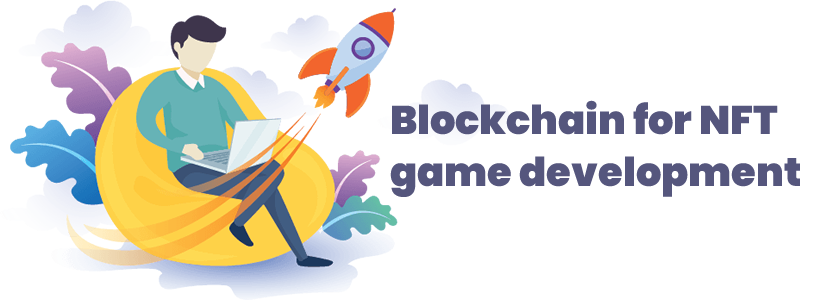
Ethereum
Ethereum blockchain is a cryptocurrency (ETH) and a secure platform for developers to create dApp games and provide assistance for Smart contracts. Additionally, blockchain technology allows game development using NFT assets that are easily transferred between other Ethereum-compatible game accounts.
With blockchain technology like the Ethereum blockchain, various NFT games have become part of the fast-growing game industry.
Also Read: What Are NFTs? And Whether Your Business Should Care?
In NFT games, the Ethereum wallet lets users store ether and use an encrypted private key to secure their cryptocurrency. Ethereum has evolved into the leading technology for blockchain in NFT games development.
Tezos
Tezos is an open-source blockchain that allows peer-to-peer transactions and smart contracts to be deployed. Tezos has secure code that lets developers create valuable assets. Because people are the ones who control this platform, it facilitates the collaborative process and improves the network, which makes the technology shine.
Furthermore, the smart contract of Tezos makes use of formal verification to ensure safety and security. The primary token on Tezos is called Tezos blockchain Tez, symbolized by XTZ, a dApp that works with dApps and provides security for networks, and allows users to participate in games or art.
Solana
Solana is a different blockchain platform that utilizes the proof of historical records and proof of stake mechanism to facilitate quick transactions. And, just like other blockchain platforms, it can use smart contracts. Numerous games, such as DeFi Lands and SolaJump, have gained much attention using this platform based on blockchain.
Its native currency is SOL, a staking token that can be used and staking your Solana tokens to earn rewards. It is also possible to use SOL for payment of fees that are linked to smart contracts as well as other transactions.
Flow
The Flow blockchain utilizes the PoS mechanism, which permits users to be part of the community after they have earned the availability of a certain number of FLOW tokens. Flow is an outstanding blockchain for creating games, assets, and applications.
It has proven to be user-friendly and reduces complexity compared to other applications. Flow provides developers with a better experience in project development, testing, and deployment. Blockchain technology is supported by DeFi applications, development tools, and marketplaces, making the development process effortless.
How does Imenso Software help develop NFT games?
Web 3, the introduction of metaverse, blockchain, cryptocurrencies, and NFTs have fueled the rapid growth of crypto games. They are highly in demand because they satisfy two basic urges of human nature – collecting unique things which have emotional value and their acceptance by society. NFT games satisfy both.
They have stirred the online gaming industry with the new decentralized and sophisticated blockchain network. If you are interested in getting a piece of the pie, Imenso software can put your idea into a scalable well-conceived crypto game. We are a renowned game development company that designs mobile and desktop games for clients.
Our game developers have got you covered with industry-leading frontend, backend, and game UI/UX solutions. Get tailored games with enticing features to meet your goals quickly.
Similar Posts
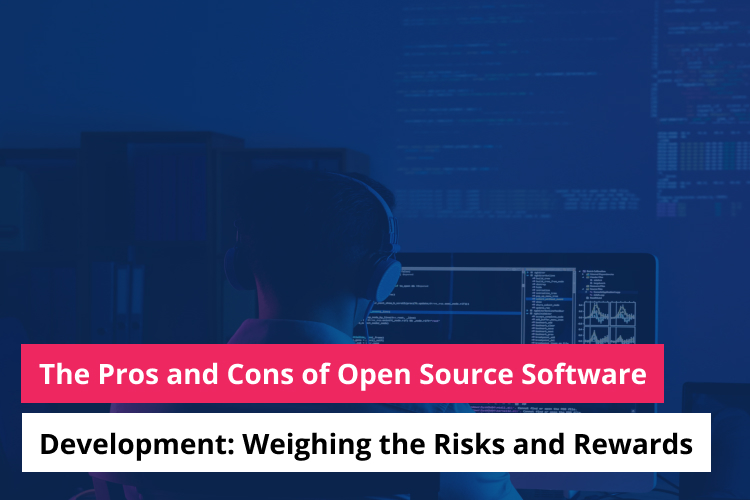
The Pros and Cons of Open Source Software Development: Weighing the Risks and Rewards
Are you tired of shelling out big bucks for proprietary software? Do you want the freedom to customize your software to meet your unique business needs? If so, open-source software development services might be the solution you’re looking for. Open-source software offers many benefits, from cost savings to collaboration opportunities and beyond. But like any […]...
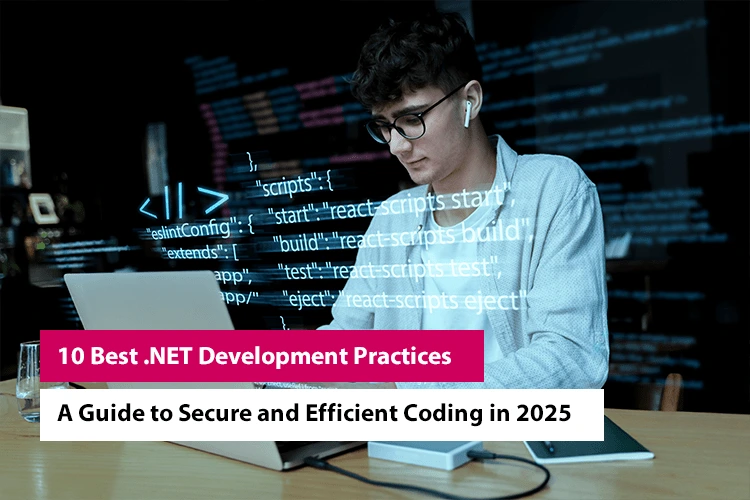
10 Best .NET Development Practices: A Guide to Secure and Efficient Coding in 2025
Do you know, that developing an application is critical? Because, in case anything goes wrong in the dot net development or coding processes, the entire business metrics can fall. Oops, that’s saddening! That’s why it is essential to follow useful .NET development best practices while building software or applications. In fact, you need to consider […]...

Frontend Development Best Practices: Boost Your Website’s Performance
Have you ever wondered what sets an outstanding website apart from the rest? The kind that captivates users with its swift loading times, seamless navigation, and overall impeccable user experience? The answer lies in the meticulous world of front-end development, where performance optimization is the key to digital triumph. In this blog, we unravel the […]...


